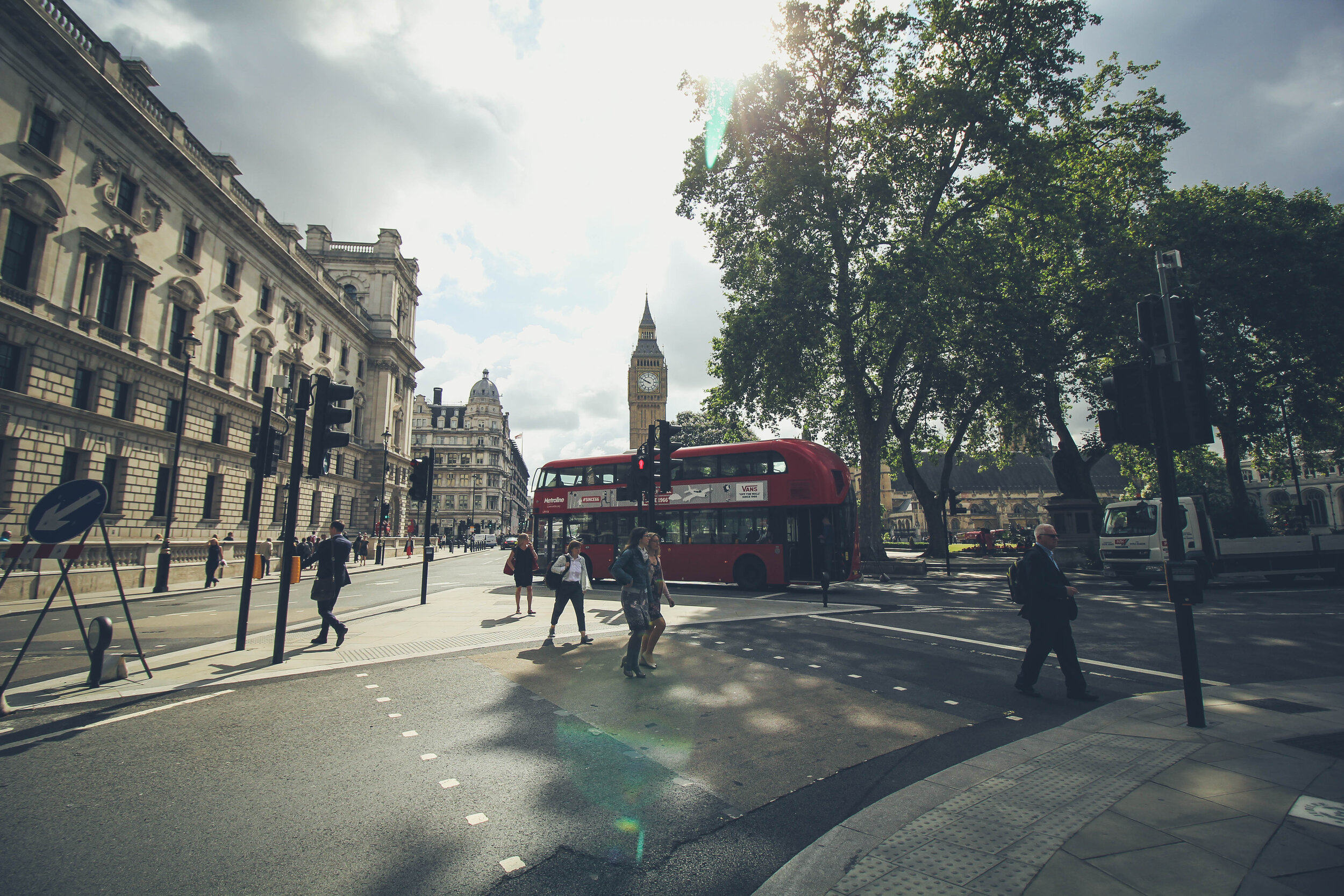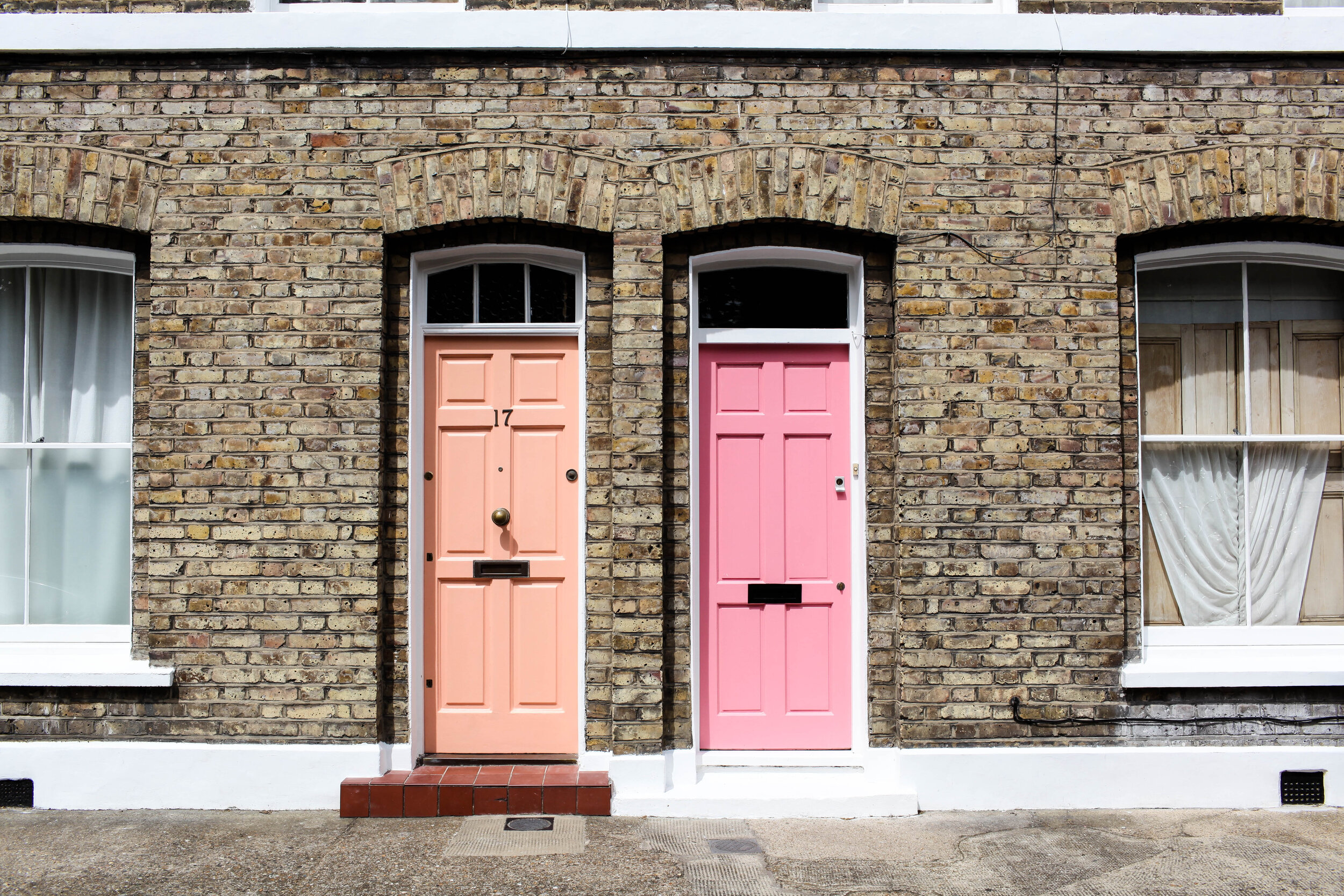Best Time to visit London, Travel Tips, and more...
Are you planning a trip to London? We're sharing the best time to visit London, Essential London Travel tips, and itinerary stops we recommend you don’t miss!
London is one of the most visited European capitals and one of the most popular cities in the world. The city receives more than 20 million visitors each year. It covers more than 30 boroughs and has a population of more than 30 million people!
Like most other big cities, London has a lot to offer: famous (and delicious!) restaurants, historical buildings, iconic landmarks, beautiful and relaxing hotels, and many world-renowned theaters and museums.
When first planning a trip to the English capital, many travelers can easily feel overwhelmed! Questions like "when is the best and worst time to visit London, where to stay, and what to do" immediately come to mind.
When is the best time to visit London?
We recommend late Spring and Fall, when temperatures are warm and it's not as crowded or pricey as in the summer.
But there's never really a bad time to visit London!
From spring blossoms and summer cafes to Fall foliage and Christmas lights, there’s always something fun and interesting to do and see in London. The ”peak tourist season” starts at the beginning of April and goes through the end of September, with July and August being the most popular months. Here's a quick summary with highlights for each season, to help you choose the best time of year to visit London:
Spring (Late March through June):
Spring is my favorite season to visit London. Locals start venturing outdoors more, almost every corner of the city is fille with colorful flowers! The relative lack of tourists compared to the summer months and the milder temperatures make Spring a great time for both first-time and returning visitors to London.
Summer (July through early September):
London is definitely one of the most popular European cities to visit during the summer. With most Europeans going on holiday in August, the English capitol gets crowded and hotel prices will definitely go up!
On the plus side, if you love the warmer temperatures, you’ll get to enjoy summer festivals, outdoor markets, and popular rooftops!
Fall (September to December):
The Fall season brings beautiful crispy air to the city, but temperatures are still mild enough to enjoy a nice walk while admiring the change of foliage.
Winter (December to February):
The Christmas season is one of the most magical times to visit London. Head toward Oxford street to admire the display of lights, or go ice skating in the rink outside the Natural Museum. The average low temperature during the winter is around 41°F (5°C). Nothing that a hot chocolate or Bailey's coffee can’t cure!
January and February bring considerably less crowds, and visitors love to celebrate Valentine’s Day from the winter igloos on the Coppa Club Tower Bridge.
London Travel Tips
Where to stay in London?
London is a big city, and many of the city’s main attractions are pretty spread out geographically. There’s not really one central area or neighborhood that I would recommend above all. To help you decide what's the best area to stay for you, here's a list of neighborhoods that I recommend:
Covent Garden:
Best Neighborhood in London for First Time Visitors. It’s in the heart of the city, and close to many major tourist attractions like the London Eye and the National Gallery. The area also has plenty of cafes, restaurants, and shopping, plus it's a 5-minute walk to Chinatown and Soho. A great starting point!
South Bank:
Best Neighborhood for Sightseeing in London. It’s pretty centrally located, offers a wide range of accommodations, and is very family friendly. Just be aware that since the neighborhood is close to many of the city’s most famous landmarks, it often attracts large crowds. If you don’t mind the bustle, this is a great place to be!
Camden and Soho:
Best Neighborhoods for Nightlife. Both areas have tons of nightlife options, pubs, restaurants, and bars. The perfect areas if that's your thing!
Notting Hill & South:
Kensington: Best Neighborhoods to Relax. Nice and posh areas with excellent shopping, and very family friendly. A bit quieter and more relaxing than some of the previous options.
Food Tips
You’ll need restaurant reservations while in London!
London has 71(!) Michelin-starred restaurants, which may be a bit surprising for a country whose cuisine is often thought of as bland. But modern London is nothing like the stereotypes, and today you’ll find literally every kind of food you could imagine!
When planning to eat at one of the popular restaurants (and I don't mean just the Michelin starred ones) make sure to book your table a few days in advance if possible.
If you want to eat during peak times and with a larger group, I recommend reserving at least two weeks in advance. London LOVES to go out to eat, so anything popular will be busy!
Some of my favorite restaurants include: Coppa Club Tower Bridge - Igloos, everything and anything in the Savoy Hotel, E Pellicci, Maggie Jones’s, Barrafina, and Barrio Soho.
Don’t forget to go for afternoon tea!
Transportation Tips
London has six major airports, so make sure to choose the most convenient for where you'll be traveling next. Avoid taking cabs to and from the airport, as uber services are very reliable in London and you can often find a rideshare option for up to half the price!
If you end up taking a cab, most accept cash or contactless credit cards. If you don’t have either, you can always politely ask the driver to stop at a cash point (ATM)!
London's main form of public transportation is the Tube (the Underground train). The train is fast and very reliable, and it's usually the way to go when hopping from tourist attraction to tourist attraction.
There are several ways to pay for public transportation in London, but we recommend you use your contactless credit or debit card. If you don’t have one or your card won’t work abroad, you can buy The Oyster card.
Pros of using your own contactless card
You won’t have to pay a deposit
There’s a daily price cap (you won't pay more in total than the price of a one day travel card)
You don’t need to recharge
No need to worry about leftover money on the card when you leave
Pros of purchasing an Oyster card
You will qualify for certain offers and discounted rates, like child/student or senior discounts
You don’t have to worry about foreign transaction fees or changes in currency conversion rates
Currency
London is among the most expensive cities in the world, and you’ll probably end up spending most of your budget on accommodation/hotels, restaurants, and entertainment.
The official currency of England is the British Pound Sterling (£), commonly known as pounds/quid.
In London, taxes and tips are already included in the price of the menu or the bill, but it is polite to leave a small tip (10 to 15% of the total is perfect) when eating in a restaurant or taking a cab. Many restaurants will add on a service charge, especially if you're in a large group (6-8+ people), so double check the bill to avoid tipping twice.
While the city isn't isn't cheap, there are always ways to save money while sightseeing in London.
Tourist Information
London Explorer Pass and The London Pass offer discounts on admission fees to some of the best tourist attractions and transportation costs.
The London Explorer Pass offers 6 packages or options. You can choose from 2 to 7 attractions from a list of more than 40. Here's a general overview of how the pass works.
London Explorer Packages:
A 2-choice London Explorer Package allows you to visit 2 attractions from their list of top London landmarks, sights, and popular tours.
A 3-choice London Explorer Package allows you to visit 3 attractions from their list of top London landmarks, sights, and popular tours.
A 5-choice London Explorer Package allows you to visit 5 attractions from their list of top London landmarks, sights, and popular tours.
A 7-choice London Explorer Package allows you to visit 7 attractions from their list of top London landmarks, sights, and popular tours.
The more choices, the bigger the savings overall.
The London Pass gives visitors access to over 90 attractions. You can choose the duration, starting from 1 day and going all the way to 10 consecutive days.
The London Pass also includes a 1-day pass for hop-on/hop-off sightseeing buses.
For even more savings, also add the Visitor Oyster card!
Attractions included in the London Pass :
Tower of London — £27.00 (the pass allows you to skip the entrance line but not the line for the Crown Jewels Exhibit, one of the highlights)
Kensington Palace — £20.00
Westminster Abbey — £22.00 (the pass won’t allow you skip
the entrance line)
St. Paul’s Cathedral — £20.00
Windsor Castle — £22.50
London Bridge Experience — £27.95
The Queen’s Gallery — £12.00
Kew Gardens — £17.00
Royal Mews — £12.00
London attractions that are free to visit:
The Natural Gallery
The Natural History Museum (highlight: dinosaur skeletons)
The British Museum (highlight: The Egyptian Collection)
The Museum of London
National Portrait Gallery.
Royal Academy of Arts.
Science Museum.
The Queen’s House
Victoria and Albert Museum
Royal Air Force Museum.
Wellcome Collection.
Tate Britain
London attractions NOT included in the London Pass:
The London Eye — £32.00 to £40.00 (same day tickets are the most expensive)
London Sea Life — £29.00+ (depending on the package)
London Madame Tussauds wax Museum— £33.50+ (depending on
the package)
Buckingham Palace Tours
London Dungeon
Houses of Parliament
I hope you've found these London Sightseeing Tips informative, and that you have a clearer idea of what to do, where to stay, and how to budget for your London trip. If you liked our article, please share it with your friends and Pin It to save for later. If you want to share some of your own tips with us for our future London trips, please leave a message in the comments section!
To find more travel inspiration and travel tips, check these articles below. Read about these destinations and so much more on our Travel section!
Things To Do In Copenhagen | The Ultimate Copenhagen Travel Blog
One Day In Brussels: Best of Brussels In A Day
Beistos from the London bridge,
Laura
Disclosure: We only recommend products we would use ourselves. All opinions are our own. This post may contain some affiliate links and if you choose to purchase some services or products using these links, we receive a small commission at no additional cost to you. We participate in the Amazon LLC Associates Program. Thank you for being part of our community and prance around the world with us!
FOR MORE EUROPEAN DESTINATIONS:
















Experience the perfect 4 days in Paris with this romantic Paris itinerary with charming cafés, iconic museums, Montmartre views, Versailles and hidden gems you’ll love.